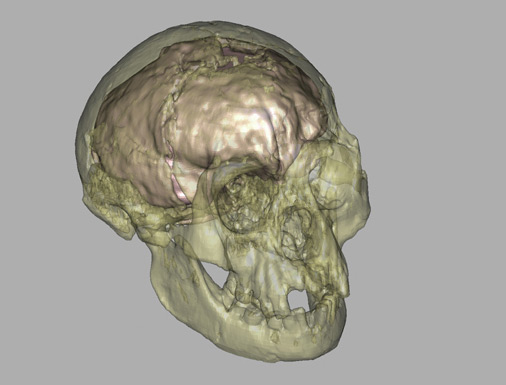Compare the Brains

The study
Dean Falk's team, which included Charles Hildebolt of the
Mallinckrodt Institute of Radiology in St. Louis and several others,
created a virtual endocast, or computer model, of the hobbit's brain
(above). They used CT scans made of the skull shortly after its
discovery. (The hobbit's skull and other bones are not fossilized
and extremely fragile, making the standard method of making
endocasts—pouring liquid rubber into the skull—not
feasible.) They then compared the hobbit's virtual endocast with
those of a modern woman, a Homo erectus, a chimpanzee, and a
modern microcephalic (a person with an abnormally small head).